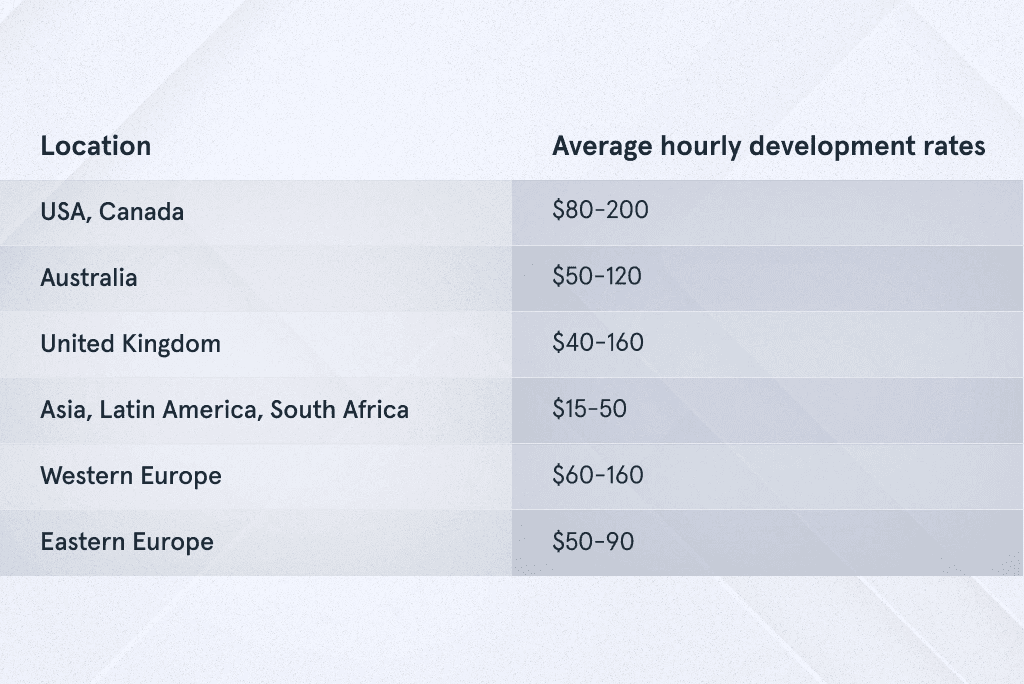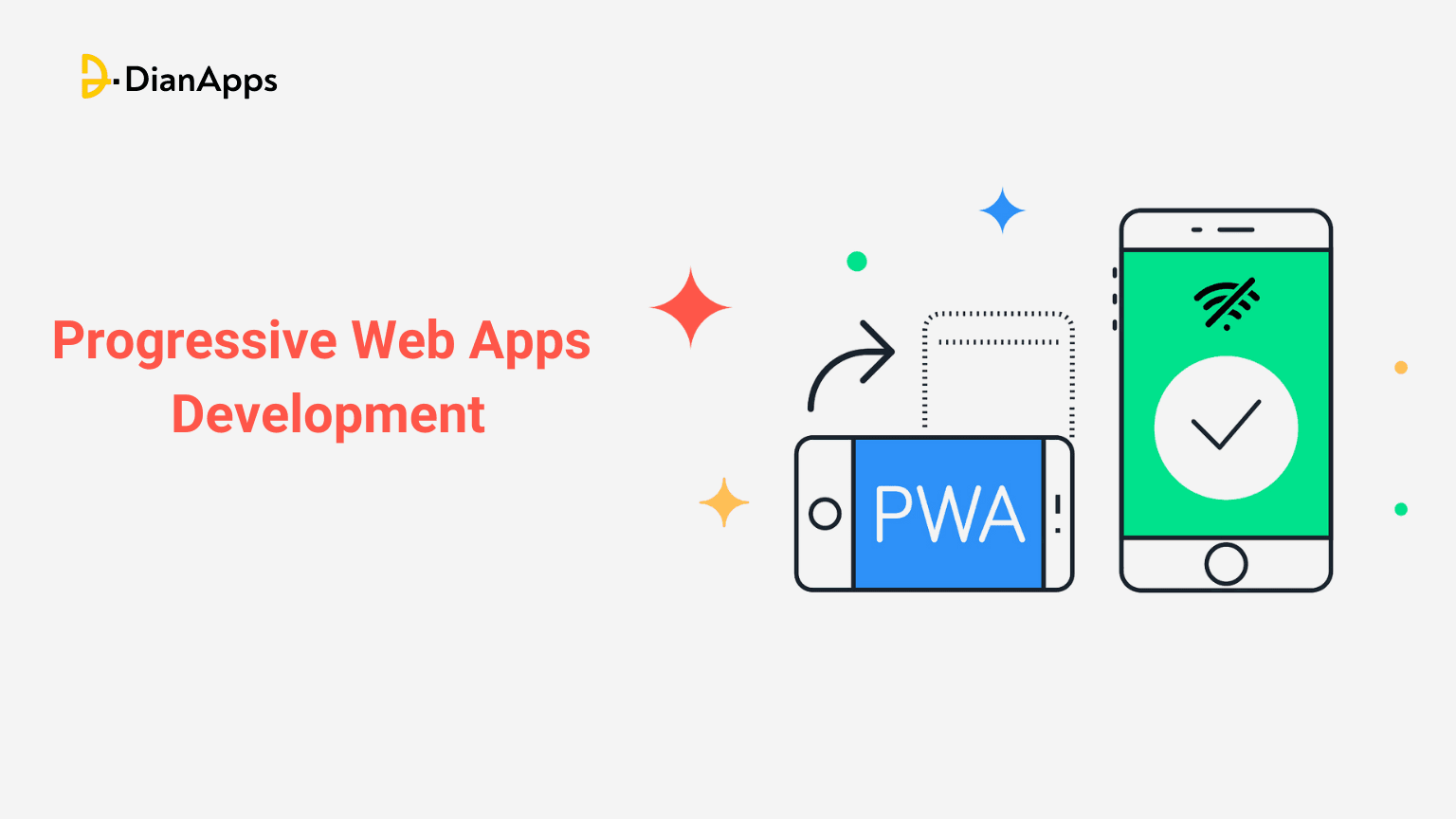Progressive Web Apps (PWAs) bring together the best features of websites and mobile apps, offering a compelling alternative to traditional native mobile app development.
Now, users can conveniently download web apps to their home screens, receive push alerts, and even operate offline, all thanks to advancements in browsers and technologies like Cache and Push APIs. The PWA market is expected to surge to $10.44 billion by 2027, with a remarkable CAGR of 31.9%.
To determine if a PWA is a fit for your business, let’s understand the concepts, advantages of PWAs hold over native apps, explore existing PWA examples, learn about the tools driving PWA development, and grasp the associated costs. Stay tuned as we unpack these topics in detail throughout this blog.
- What Is a Progressive Web Application?
- PWA Examples
- What Are the Benefits of Progressive Web Apps?
- Progressive Web App Cost
- Hidden Costs of PWA App Development
- Factors That Determine Progressive Web app Cost
So, let’s get started!
What are Progressive Web Apps?
PWA, or “Progressive Web App,” blends web-based and native mobile technologies, delivering an app-like user experience without the need for users to download or install it from an app store. PWAs are the need of an hour and their effectiveness lies in offering the feature-rich experience of a native mobile app while retaining the flexibility and cost advantages of a web application.
So, how do they work?
PWAs don’t adhere to a singular technology; rather, they embody a fresh strategy in constructing web applications by incorporating modern features, APIs, and patterns. Fundamentally, for a website to qualify as progressive, it needs to enlist a service worker, employ HTTPS, and possess a web app manifest file. These three prerequisites for PWAs are designed to facilitate a range of contemporary features and functionalities.
Key Statistics
- The PWA market is poised to hit $10.44 billion by 2027.
- The travel sector witnesses a threefold surge in conversions with PWAs.
- Presently, only 54,000 websites leverage PWAs.
- PWAs drive a remarkable upswing in conversions, reaching up to 50%.
- With loading times under 2 seconds, PWAs effectively minimize bounce rates.
- PWAs contribute to a substantial enhancement in user retention, boasting up to 180% improvement.
- Creating a PWA proves to be 3–8 times more economical compared to native apps.
- PWAs cater to a vast audience, serving over 6.3 billion smartphone users globally.
- Providing offline access and push notifications, PWAs elevate the overall user experience.
- In terms of security, PWAs exhibit 60% fewer vulnerabilities compared to native apps.
What Are the Benefits/Features of Progressive Web Apps?

1. Low development costs
PWAs eliminate the need for different versions tailored to different devices; one progressive app caters to all endpoints. This streamlined approach significantly lessens the development workload, resulting in a cost reduction. In fact, the cost is notably three to four times lower compared to creating a native mobile app.
2. Like a native app
Mobile users now favor apps over browsers due to enhanced user-friendliness, offline functionality, and attractive interfaces. Progressive web applications (PWAs) offer an advanced user experience, seamlessly blending mobile app aesthetics with optimal website performance. Regardless of the underlying technologies, PWAs consistently provide a user experience superior to websites. They share the speed, responsiveness, and comprehensive capabilities of websites, ensuring effective search engine indexing and increased page views on the internet.
3. Offline functionality
With offline functionality, PWAs offer a significant advantage over websites requiring constant internet connectivity. Service workers in PWAs automatically cache essential features, allowing users access without an internet connection. This capability, crucial for retailers, prevents users from abandoning catalogs and boosts customer retention by presenting a customized offline page for previously unvisited content.
4. Faster Installation
PWAs simplify user experience by eliminating the need for lengthy installations, allowing quick downloads directly to devices without App Store or Google Play visits. This streamlined process reduces user abandonment. Post-download, users access the app via a desktop icon, enhancing accessibility. Some browsers prompt app downloads through teasers, enhancing credibility. The software’s installation-free nature enables easy access via a URL, fostering high shareability.
5. Better Performance
PWAs enhance user experience with efficient caching, ensuring swift operation and optimal performance, similar to websites. This improves user satisfaction and boosts conversion rates. For retailers and content providers, adopting PWAs offers a superior user experience, fostering higher retention and customer loyalty compared to traditional mobile apps.
6. Platform & Device Agnosticism
Progressive web apps stand out by seamlessly functioning across diverse platforms and devices, ensuring a consistent user experience. This cross-compatibility facilitates uninterrupted user journeys, allowing smooth transitions between devices. This adaptability is a boon for business automation, providing companies confidence in consistent performance irrespective of platforms or app versions. Additionally, PWAs exhibit high responsiveness, adeptly adjusting to various screen sizes for enhanced user convenience.
7. No Updating Issues
PWAs boast an automatic update feature, sparing users the inconvenience of manual downloads. Updates seamlessly occur upon visiting, ensuring a refreshed look without user intervention. Some PWA producers choose to send push notifications for new updates, yet users retain control over accessible information. This balance of autonomy and streamlined updates enhances the user experience without intrusive prompts.
8. No Dependence on App Distribution Services
App distribution services like the App Store and Google Play impose stringent requirements on software, making compliance a time-consuming process. Failure to meet criteria may lead to sudden removal from these databases. PWAs offer a solution by sidestepping the need for storage on such services, sparing producers from intricate compliance procedures and potential removal challenges.
9. Push Notification Functionality
Like native apps, PWAs leverage device-specific features like push notifications, a versatile tool for effective content advertising. Statistics reveal that nearly 60% of users permit PWAs to send notifications, significantly enhancing opportunities for promoting products or services. These notifications, displayed on mobile screens, attract attention, improving a company’s access to its target audience. However, users permitting numerous notifications risk cluttering their digital experience. Nonetheless, the bouncing notifications and desktop app icons contribute substantially to brand recognition.
10. Enhanced Security
PWAs prioritize data safety by relying on HTTPS, mitigating security risks such as snooping and content tampering. This protocol ensures a secure connection. Additionally, PWAs leverage Web Bluetooth technology, incorporating specific security capabilities to enhance overall protection and user confidence.
Real-life examples of PWAs
After reviewing the advantages, you should have a clear understanding of why PWAs can be advantageous for startups and medium-scale enterprises. These applications have already demonstrated their value by assisting some major players in reaching their goals.
- Starbucks has increased its daily active users 2X with PWA.
- Tinder has successfully cut down load time from 11.91 seconds to 4.69 seconds using PWA. Moreover, Tinder’s PWA is almost 90% smaller than its native Android app.
- Pinterest has experienced a 60% increase in its core engagements by rebuilding its mobile site as a PWA.
- BookMyShow has increased its conversion rates by 80% using PWA. In fact, the PWA takes 3 seconds or less to load.
- Forbes has decreased its loading time on mobile from 6.5 seconds to 2.5 seconds using PWA. Moreover, impressions per visit were raised by 10%.
- Washington Post saw a decline of 88% in load time compared to mobile website.
- Uber has successfully enabled quick ride requests regardless of location, network speed, and device.
How much does it cost to develop a progressive web app?
Creating a Progressive Web App (PWA) is cost-effective compared to native apps, with PWAs being 3-4 times less expensive, depending on platform needs. This budget-friendly approach enables businesses to efficiently engage potential clients across various platforms.
Not only does PWA reduce development costs and time, but it also enhances user experience, unlocking users’ full potential. Often, organizations overlook maintenance costs, accounting for around 20-25% of total development costs. Implementing PWA development strategies helps manage maintenance expenses efficiently, as PWAs are generally more affordable to maintain than native apps.
Hidden Costs of PWA App Development
1. Understanding Goals
Before deciding on designs for your Progressive Web App (PWA), it’s crucial to comprehend both short- and long-term goals. If customization is needed, a clear understanding of your requirements is vital.
2. Securing Customer Data
Safeguarding customer information against malware and security flaws is imperative. Hidden costs may arise from employing security specialists, data backup, and ensuring infrastructure security with commercial technology.
3. Use of Mockups
Developers may levy hidden charges for utilizing mockups, including subscription fees for plugins and themes. To prevent unexpected costs, collaborate with expert development teams familiar with your project objectives.
4. Avoiding Additional Costs
To steer clear of extra expenses for plugins at the project’s end, choose experienced development teams that thoroughly grasp your project goals. This ensures a transparent understanding, minimizing the risk of hidden charges.
Factors That Determine Progressive Web app Cost
1. Specific Requirements
The cost of developing a Progressive Web App (PWA) hinges on the store type and the desired outcomes. Building a PWA for a retail store differs from creating one for an online booking system, demanding distinct resources.
2. UX & UI Requirements
The development cost is significantly influenced by UX & UI, crucial for setting your app apart. High-quality graphics elevate costs, allowing flexibility based on budget considerations.
3. Tech Stack
Various factors like prototype complexity, custom coding, CMS, SEO, and navigation affect overall PWA development costs. In essence, a more advanced tech stack corresponds to higher costs.
4. Location and Developer’s Expertise
Hourly rates vary by region; experienced developers in regions like the US may cost double or triple compared to those in India. The expertise of the developer also impacts rates.

5. Type of Solution
Choosing between ready-to-use and custom-built solutions influences costs. Ready-to-use solutions are cost-effective, while custom solutions demand more resources and hours, consequently incurring higher costs.
6. The Pricing Model
Whether opting for a freelance PWA developer or a app development company, the pricing model matters. While freelancers are more budget-friendly, web development companies offer broader capabilities. Billing methods include hourly, fixed-price, or a mixed approach.
Final Words
By seamlessly combining the best features of native mobile software and web applications, PWAs elevate user experience and foster higher retention rates. The value they bring to businesses extends beyond customer satisfaction, encompassing enhanced security, cost-effectiveness, and platform flexibility.
Progressive web applications represent the future of digital interaction. Considering their multifaceted advantages, businesses are encouraged to make the shift now to leverage their capabilities fully. For more information or to start creating a forward-looking solution, connect with our mobile app development experts for tailored insights and guidance.










Leave a Comment
Your email address will not be published. Required fields are marked *